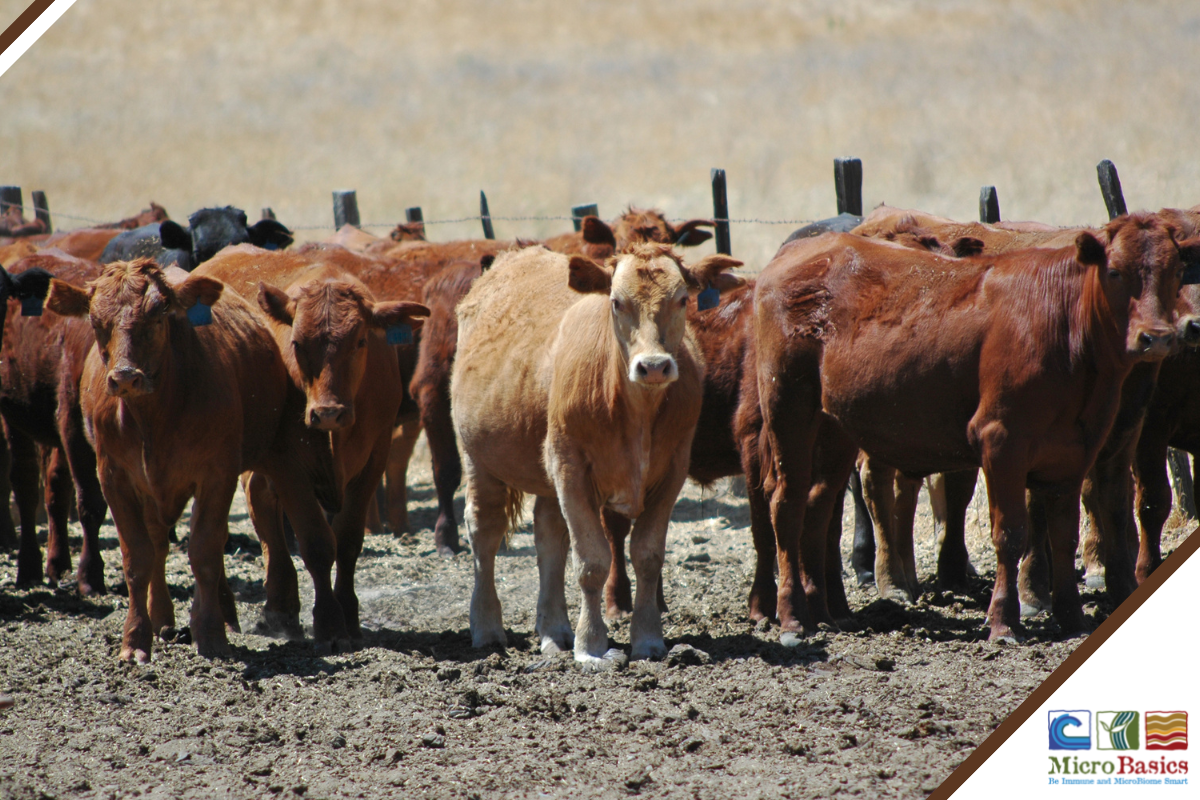Digestive disorders are a relatively small occurrence in feedlots when compared to respiratory problems. Respiratory disease accounts for approximately 80% of illness in feedyards compared to digestive disorders affecting only about 5% of feedyard animals.
Although only affecting a small percentage of animals, digestive disease can be a significant problem. Diarrhea caused by digestive illness can result in decreased treatment response, added medication costs, and increased mortality.
There are four major causes of diarrhea in feedyard cattle.
Parasitism: Unless younger animals are dewormed at the ranch or backgrounder, most cattle are infected with internal parasites, especially those coming off grass. Parasite control is important to keep the animals’ digestive systems functioning correctly. Internal parasites cause damage and affect the immune system, diminishing the ability to fight diease. The result is lower performance, greater death loss, and less salable product.
Animals harboring parasites will often have diarrhea that is green in color, a rough hair coat, and appear unthrifty.
Bovine Viral Diarrhea (BVD): This virus is widespread, and most herds are at risk of infection. Symptoms of BVD may vary depending upon the immune status of the animal and the strain of the infecting virus. Non-vaccinated or immunocompromised individuals will likely appear to have severe illness with squirting pea green diarrhea that may contain blood, and a high fever. Infected animals will go off feed, may exhibit mouth ulcers and often pneumonia. Occasionally animals will die very quickly, even before other symptoms present themselves.
Economic losses include increased labor and treatment costs, death loss, reduced gain of the infected animal and in-contact pen mates, and decreased carcass quality. Best management practices for control of BVD include testing for persistently infected individuals, biosecurity, and vaccination.
Salmonella: Widespread and can be found on a large number of farms and in many species of animals. This opportunist bacterium infects the animal at times of immune system suppression, during stressful events when beneficial gut microbiota are disrupted, or when the animal is very young. Infection can range from “healthy” carrier animals that shed the organism without symptoms of illness to those exhibiting acute signs of infection.
When an animal is experiencing multiple stressors the gastrointestinal tract barrier functions can falter and lead to “leaky gut syndrome”. When this happens Salmonella can exit the GI tract and enter the blood system. The lymphatic system will filter the blood and the salmonella pathogen will end up in the lymph nodes and the liver as the infection becomes systemic.
Animals infected with Salmonella may exhibit a fever and their diarrhea is often yellow in color and very foul smelling.
Coccidiosis: Protozoan parasites that are host specific. The oocyst is usually shed in the feces of affected animals and of subclinical carrier animals and is ingested by pen mates. Infection causes both severe illness and possible death, or subtle illness negatively impacting growth and productivity of the animal.
Diarrhea is commonly bloody and stains the rear end of the animal a blackish-green color. Treatment and control include keeping pens clean to prevent ingestion of oocysts as well as use of an anticoccidial regimen to prevent further disease and contamination.
When diarrhea or loose stools are first identified it is important to sort out any nutritional causes before moving on to pinpointing a pathogen. Many times, a ration change or a new shipment of cattle can cause looseness that lasts up to five days. It may also be common to see blood in the stool a few days after beginning to feed grain. Most importantly cattle with nutritional causes of diarrhea will not exhibit the same signs of illness as those with a pathogenic cause.
Control and prevention of digestive disease begins with low stress cattle handling and a sound nutritional program where cattle are received onto rations that will not aggravate digestive upsets.
Keep in mind that cattle with a digestive disease are much more prone to secondary intestinal infections and respiratory disease. Work with your veterinarian to determine effective treatment protocols for infected animals that are appropriate for the type of pathogen.
Written by: Mariah Gull, M.S.

